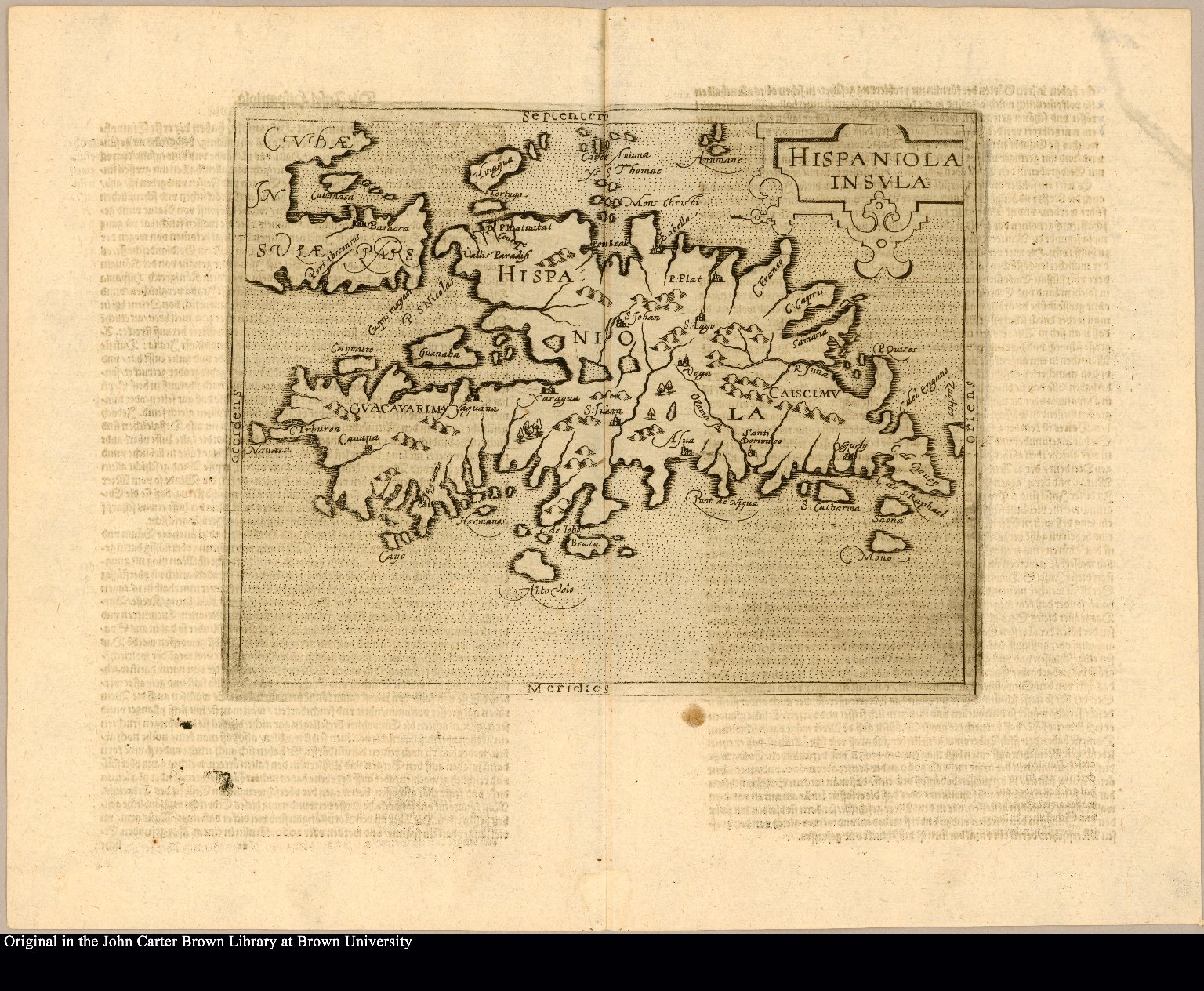Introduction
 Black people began to arrive in La Española with the first transatlantic expedition led by Christopher Columbus in 1492 and continued to do so throughout the sixteenth century, either as free individuals, as servants, or, mostly, as enslaved laborers; either under legal permits issued by the Spanish monarchy or smuggled in as contraband in legally dispatched ships or in un-authorized, non-licensed vessels of pirates or corsairs, usually from countries hostile to Spain at any given time during the century.
Black people began to arrive in La Española with the first transatlantic expedition led by Christopher Columbus in 1492 and continued to do so throughout the sixteenth century, either as free individuals, as servants, or, mostly, as enslaved laborers; either under legal permits issued by the Spanish monarchy or smuggled in as contraband in legally dispatched ships or in un-authorized, non-licensed vessels of pirates or corsairs, usually from countries hostile to Spain at any given time during the century.
By the 1520s, due in part to the sharp decline and almost total disappearance of the Taíno native population of the island, resulting from the greatly destructive nature of the conquest and early colonization by the Spaniards, Black Africans and their La Española-born Black and mixed-race descendants became the demographic majority in this first European colonial society of the Americas of modern times, making La Española the first majority Black or dark-skinned post-Columbian society of the continent, an overall racial profile that it has kept as it has since evolved over five centuries of history into what is today the nation of the Dominican Republic.[1]
In this section of First Blacks in the Americas an overview is presented of how Black people arrived in La Española throughout the first one hundred years of the modern history of the continent since the European colonizers first disembarked, their legal status when they arrived, how they were shipped there, and how they were received by the colonists, together with the imperial circumstances that influenced their transportation to the Americas in the first place.
[1] This historical racial peculiarity of the early colony of La Española has rightly led scholar Silvio Torres-Saillant to call its descendant contemporary society, the Dominican Republic, “the cradle of Blackness” in the Americas. (Torres-Saillant, Silvio. Introduction to Dominican Blackness. 2nd ed. New York: CUNY Dominican Studies Institute Monographs, 2010.)
